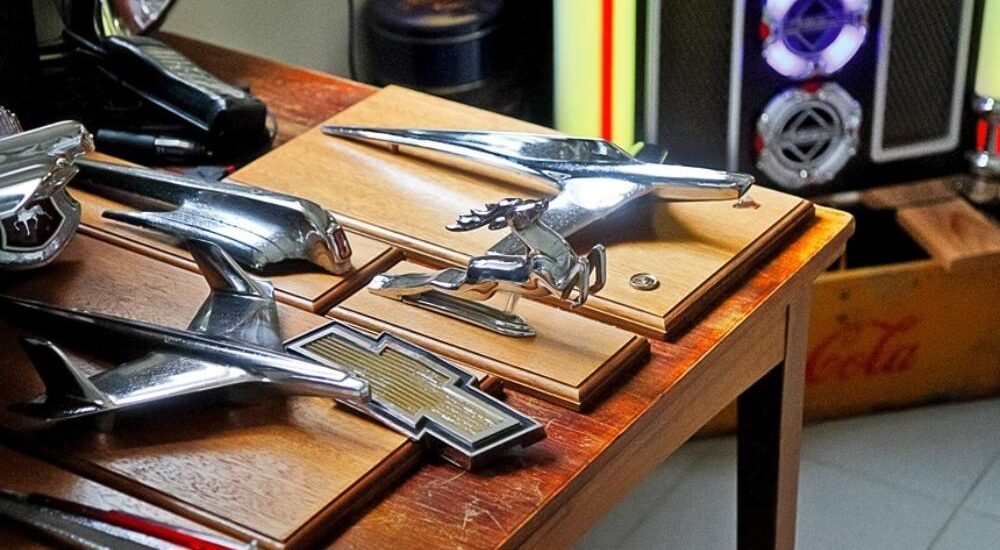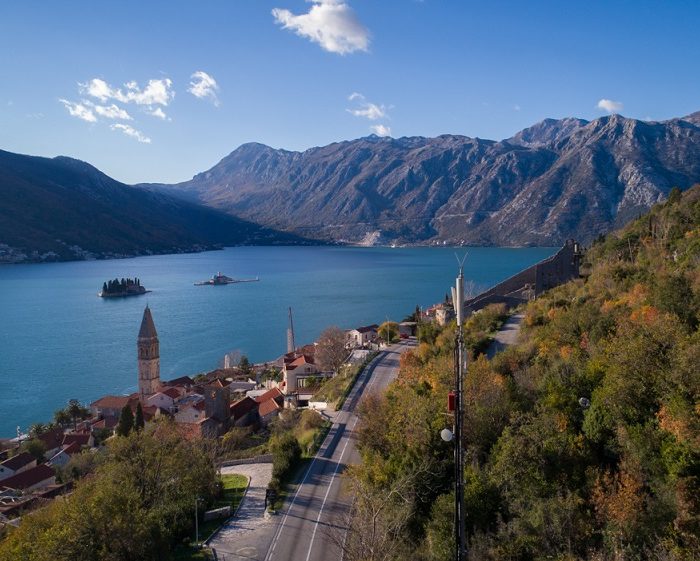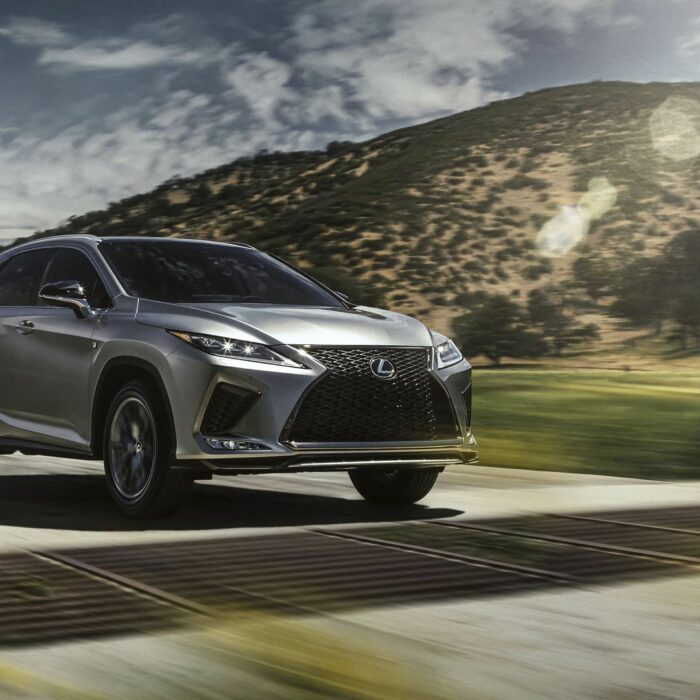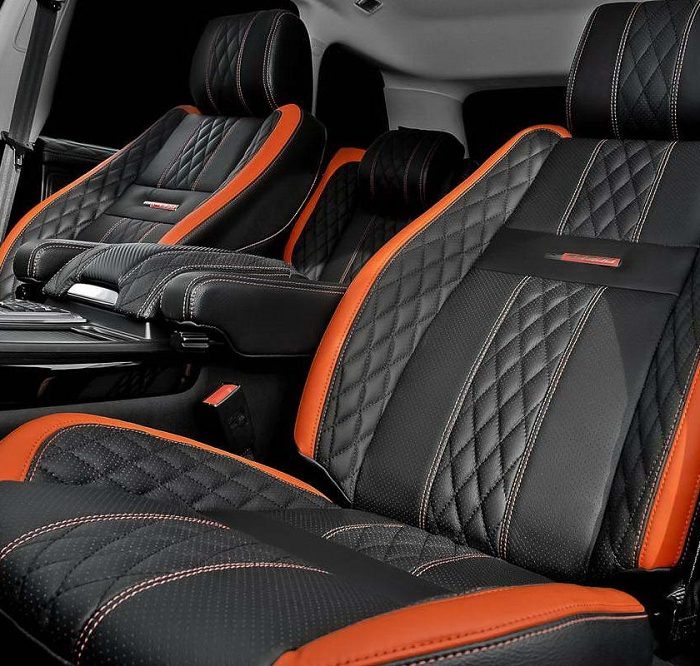After spinning the wheels of his wheelchair, the man disappeared into the dim light of the hangar, clicked the switch, and, waiting for the lamps to warm up, smiled modestly. I froze for a moment, then wanted to pinch myself: this is a clone of our Vehicle and Automobile Museum! The corner model of an old garage was literally mirrored from the Autorodeo exhibition stand we created for retro car shows (remember our black-and-blue Fiat set against the backdrop of an old workshop?), and the collection itself—what a retro mélange! But with such ingredients! The mini-tractor Oliver Cletrac HG, the 1919 Dixie Flyer American phaeton, the Danish-made electric Kewet El Jet, and the half-track all-terrain vehicles Bombardier. And how did our Moskvitches, Ladas, Gazons, and Bukhankas end up here?

A similar garage setting was recreated at one of our exhibition stands. And the car was the same — Fiat 500 Topolino.
It turns out there were official deliveries, at different times. These were facilitated by the so-called “Cod Wars,” which Iceland fought with the British fishing fleet by banning their ships from fishing near the island. In retaliation, the British imposed an embargo on Icelandic seafood, but the lesson didn’t work because the Soviet Union eagerly accepted the embargoed fish, paying for the supplies with vehicles and tractors.



Due to the climate, our Gaziks were ruthlessly modified in Iceland. A car with a soft top is a rarity here.

No complete ZIS cars are left in Iceland. But there’s a hood!
The star of the first wave of Soviet imports was the GAZ-69, which, although not remarkable for its power, was far superior in Iceland to the well-known vehicles like Willys, Jeep, Ford, and Land Rover in terms of cabin space and driving comfort. It must be said that our “Gaziks” were relentlessly modified here, as it was impossible to drive a vehicle with a soft top instead of a hard roof in the local conditions. The Ulyanovsk “Bukhankas” were highly valued by Icelanders for their passenger capacity, full all-wheel drive with a reduction gearbox, and versatility: on public roads, the twelve-seat vehicles moved faster than the German Unimogs and their analogs.



Second-wave deliveries: Niva, “Bukhanka,” “Kopeyka.” Judging by the preserved “Glavryba” stickers, the Icelanders eagerly bought used Soviet vehicles — through Soviet trade missions.
The local Transport Museum was founded by Reykjavik resident Ingólfur Krístiánsson. After retiring and recalling his long-time passion for machinery, he left city life behind and moved to the town of Ístaðfell, where he had spent his childhood. His wife became the keeper of the automotive hearth and PR manager for the project. Through her efforts, the museum transformed into a true cultural hub, offering owners of oldtimers a place to securely store their vehicles. The museum in Ístaðfell rose to its feet—on wheels, rather—amid grumbling from neighbors and environmental activists (who questioned, “Why do we need a car cemetery here?”). But year after year, the collection grew, expanding to two hundred and fifty vehicles and several thousand smaller exhibits.

The rear end sticking out from under the hood — a hint at the fragility of our Moskvitches?
Even we have only a few of these Moskvitches left.
The passionate couple passed away within two months of each other, and since 2003 the museum business has been headed by their son Sverrir Ingolfsson, who, despite his disability, leads a whole team of handy volunteers and convinces local authorities to financially support the project. By the way, don’t be surprised by the oddities in names: what we are used to considering a surname, in Iceland is a derivative of the father’s or mother’s name, that is, a patronymic or matronymic. And only a few people in this country actually have surnames.

Sverrir Ingólfsson

American military classic: Dodge WC series, with a 750 kg payload. Known here as “Dodge three-quarter ton.

Willys MB, also known as Ford GPW — after the war, there were many such cars in Iceland.


Car-audio from the mid-20th century. Including Soviet-made!
In short, if you have a moment, visit www.ystafell.is. And if you happen to find yourself in Iceland, take the time to visit the automotive past of the northern Atlantic.

Swedish Aktiv Fischer Trac-Master — tracked all-terrain vehicles of this caliber are highly sought after in modern Russia.

The Oliver Cletrac HG tractor is restored to perfection!

Today, the American Tucker Sno-Cat would be called a snow amphibious vehicle.

Anyone who lived in a village will recognize this profile from a mile away.
Photo: Konstantin Sorokin
This is a translation. You can read the original article here: На колесах: репортаж из музея транспорта в Исландии

Published March 27, 2025 • 4m to read





